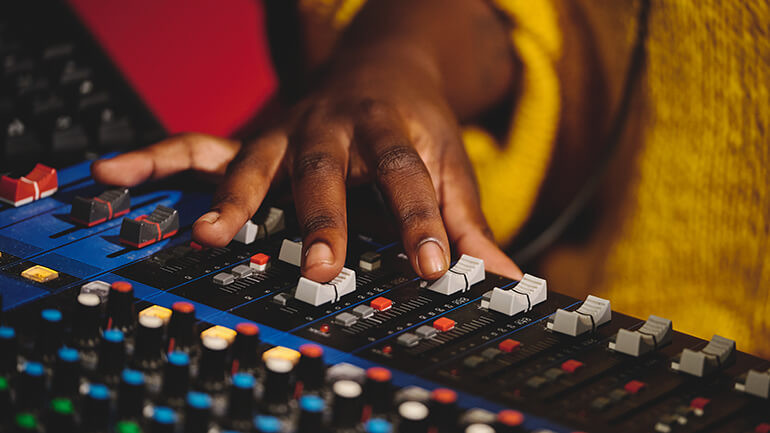Mix and Match
Why composing and mixing a song one section at a time can help take the pressure off getting the whole thing in one fell swoop

When it comes to making a master mix, you’re probably inclined to nail it in one sitting - which of course may require a fair amount of practice beforehand. But if you record in segments using punch-ins and the like, why not apply the same approach to mixing?
Working on a mix one section at a time—verse, chorus, intro, outro, solo—not only alleviates the pressure of getting it all at once but allows you to experiment with different types of instrumentation, sound processing and equalization. You also have the option to copy and paste a completed verse or chorus, rather than mix each section individually.
Furthermore, this method can also serve as a way to use any remaindered ideas from cast-off songs—say, an existing chorus or orphaned bridge melded to a new set of verses, or vice versa.
Set the tempo. To ensure a consistent tempo from start to finish. ideally you’ll want to use a click track, particularly if you’re working with a drummer. Even the best players may accelerate as the song progresses, making any subsequent editing difficult unless the meters match. If you don’t like working with clicks, at least keep timekeeping front of mind throughout.
Tackle the tough stuff first. When working on a mix one piece at a time, you don’t necessarily have to go in order. In fact, some say to start with the most challenging sections—the first chorus, the tricky background harmonies in the bridge, and so forth. Also, don’t forget that you’re at liberty to simply copy and paste one perfected chorus rhythm track across other chorus sections (maybe adding the odd percussion instrument or other artifact so that nobody notices).
Pick the “best” pieces. Another benefit of mixing in sections: the ability to choose from different performances of the same passage. Let’s say you’ve recorded five complete takes of a song’s rhythm track, one after the other, and upon listening back you decided that Take 2 had the best overall feel, however the Take 4 guitar intro was somewhat cleaner, and maybe the last chorus on Take 6 had a bit more energy than the others. Assuming the takes are at least relatively close tempo-wise (and by doing them consecutively they should be, click or no click), just select the preferred song sections, then carefully edit them into your “main” mix template. Any minor tempo or level differences between takes usually can be adjusted using your editing software; you can also run the finished mix through a compressor/limiter, just enough to ensure volume uniformity throughout, while adding a touch of reverb may help cover any stitch marks (as the echo “spills” from one part into the next).
Merits of going modular. Veteran composers often talk about how their best works arrived almost in one gulp, with title, hook, and verse pretty much intact right from the start. But as we all know, that kind of musical magic can be fleeting, and you’re more likely to land something that is only partially compelling. By using the “modular” approach to both song construction and mixing, you can take your time and experiment with different ideas, instrumentation, coloration, or anything else it takes to make something that’s satisfying from start to finish.






Community
Connect with BMI & Professional Songwriters